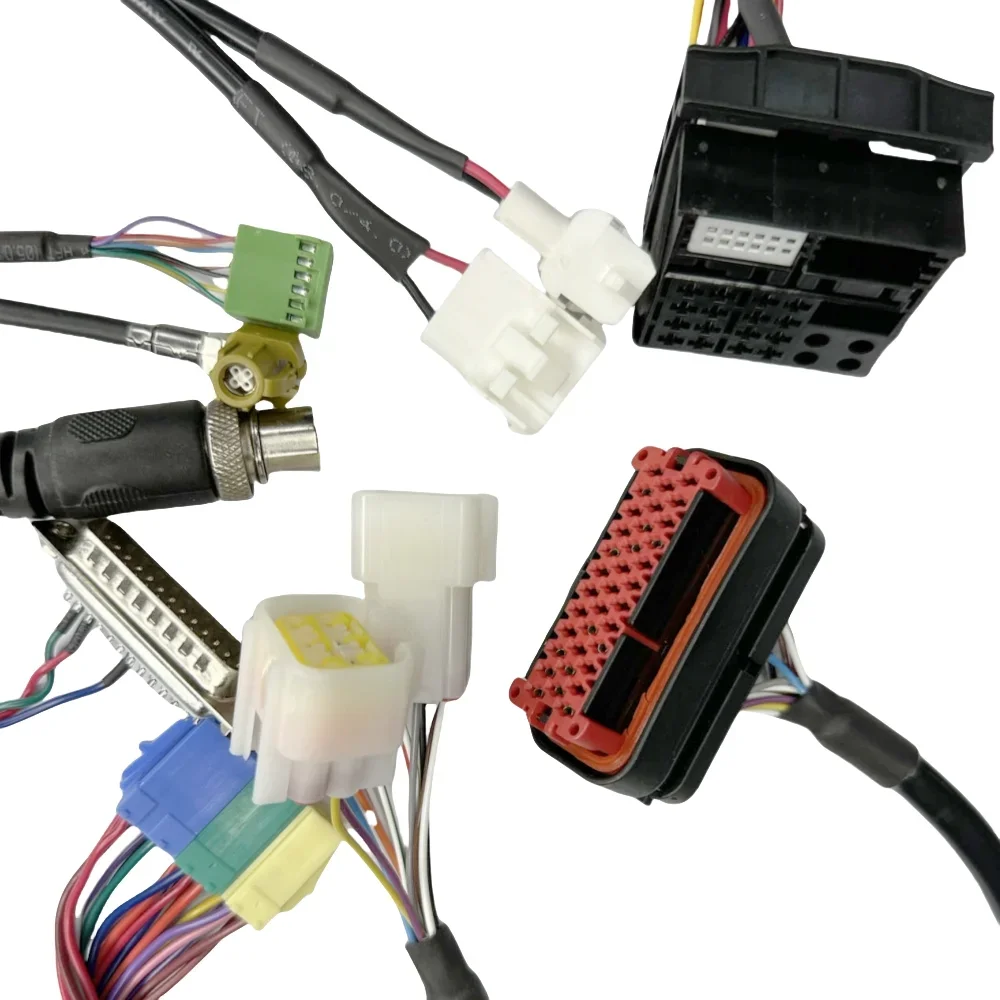Streamlining Automotive Electrical Systems with Wiring Harness Sockets
In the rapidly evolving automotive industry, the efficiency and reliability of electrical systems are paramount. As vehicles become increasingly complex, the need for streamlined solutions to manage electrical connections has never been more critical. One of the key components in achieving this is the wiring harness socket. This article explores the significance of wiring harness sockets in automotive electrical systems, their components, benefits, and future trends.
Understanding Wiring Harnesses and Their Functionality
What is a Wiring Harness?
A wiring harness is a collection of wires, cables, and connectors that transmit electrical power and signals throughout a vehicle. It serves as the backbone of the automotive electrical system, ensuring that various components such as the engine, lights, sensors, and entertainment systems communicate effectively. Without a properly functioning wiring harness, a vehicle's electrical systems would be disorganized and prone to failure.
Components of a Wiring Harness
A typical wiring harness includes:
Wires: Conductors that carry electrical current.
Connectors: Join wires to components or other wires.
Terminals: End points of wires that connect to devices.
Protective coverings: Shields wires from physical damage and environmental factors.
These components work together to create a robust network that supports the vehicle's electrical needs.

The Role of Wiring Harness Sockets
What Are Wiring Harness Sockets?
Wiring harness sockets are specialized connectors designed to facilitate secure connections between different sections of a wiring harness. They play a crucial role in ensuring that electrical signals and power are transmitted reliably across various components of the vehicle.
Types of Wiring Harness Sockets
There are several types of wiring harness sockets used in automotive applications:
Sealed Sockets: Protect against moisture and contaminants, ideal for outdoor applications.
Unsealed Sockets: Used in less demanding environments where exposure to elements is minimal.
Multi-pin Sockets: Allow for multiple connections within a single unit, reducing clutter and improving organization.
Each type serves specific purposes based on the vehicle's design and operational requirements.
Benefits of Using Wiring Harness Sockets
Enhanced Reliability
Wiring harness sockets provide a reliable connection between various components. By ensuring secure connections, they minimize the risk of intermittent failures that can lead to performance issues or safety hazards. Quality sockets can withstand vibrations and thermal expansion, which are common in automotive environments.
Simplified Assembly and Maintenance
Using wiring harness sockets simplifies the assembly process during manufacturing. Instead of connecting individual wires directly, manufacturers can use sockets to group connections efficiently. This not only speeds up production but also makes it easier for technicians to perform maintenance or repairs by allowing quick disconnection without damaging the wiring.
Space Optimization
Automotive designs often prioritize space efficiency. Wiring harness sockets help optimize space by reducing the number of individual connectors needed. This compactness allows for more streamlined designs without compromising functionality.
Improved Safety
Electrical failures can lead to significant safety risks in vehicles. High-quality wiring harness sockets reduce these risks by ensuring secure connections that prevent short circuits or power loss. Furthermore, many modern sockets come with features like locking mechanisms that provide additional security against accidental disconnections.

Manufacturing Process of Wiring Harness Sockets
Design and Prototyping
The manufacturing process begins with designing the socket based on specific automotive requirements. Engineers use computer-aided design (CAD) software to create prototypes that meet industry standards for durability and performance.
Material Selection
Choosing appropriate materials is crucial for socket manufacturing. Common materials include high-temperature plastics for housings and copper alloys for terminals due to their excellent conductivity and resistance to corrosion.
Injection Molding
Once designs are finalized, the manufacturing process typically involves injection molding for producing plastic components. This method allows for high precision and consistency across large production runs.
Assembly
After molding, sockets are assembled with terminals and any necessary seals or gaskets. Quality control measures are implemented at this stage to ensure each socket meets stringent performance standards before being integrated into wiring harnesses.
Future Trends in Automotive Wiring Harness Technology
Smart Connectors
With advancements in technology, smart connectors equipped with sensors are emerging as a trend in automotive wiring systems. These connectors can monitor electrical flow and detect faults in real-time, allowing for proactive maintenance.
Lightweight Materials
As manufacturers strive for fuel efficiency, there is a growing trend toward using lightweight materials in wiring harness sockets without compromising strength or durability. This shift helps reduce overall vehicle weight while maintaining performance standards.
Integration with Electric Vehicles (EVs)
As electric vehicles become more prevalent, wiring harness technology will need to adapt to handle higher voltage levels safely. This includes developing specialized sockets that can manage increased power demands while ensuring safety and reliability.

Conclusion
Wiring harness sockets play an essential role in streamlining automotive electrical systems by enhancing reliability, simplifying assembly, optimizing space, and improving safety. As vehicles continue to evolve with advanced technologies, the importance of high-quality wiring harness sockets will only grow. Manufacturers like Dongguan Xinying Electronic Co., Ltd., which specialize in producing various types of electronic cables and connectors, are crucial in supporting this industry shift toward more efficient automotive electrical systems.
By understanding the significance of wiring harness sockets and staying informed about emerging trends, manufacturers and consumers alike can contribute to creating safer and more efficient vehicles for the future.
Understanding the Importance of Automobile Wiring Harness Sockets
- Art
- Causes
- Crafts
- Dance
- Drinks
- Film
- Fitness
- Food
- Jeux
- Gardening
- Health
- Domicile
- Literature
- Music
- Networking
- Autre
- Party
- Religion
- Shopping
- Sports
- Theater
- Wellness


